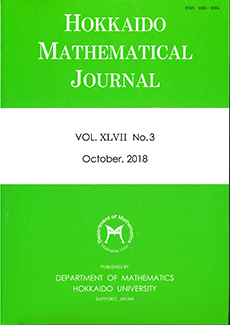Abstract
If $f X\arrow X$ is a continuous function, $x\in X$ is called a periodic point if some iterate $f^{k}$ of $f$ leaves $x$ fixed. In 1953 F. B. Fuller proved a basic result for the existence of periodic points. He showed that if $X$ is a compact absolute neighborhood retract with non-zero Euler characteristic and if $N(X)$ is the larger of the sums of the odd and even real Betti numbers of $X$, then for any homeomorphism $f$ on $X$, $f^{k}$ has a fixed point for some $k, $1\leq k\leq N(X)$. Actually Fuller’s result holds for any space$X$ for which the Lefschetz Fixed Point Theorem is valid.In this paper the authors first establish a number of extensions of the Fuller Theorem. They next consider G-spaces and extend results of Mann on periodic points and invariant orbits.In the last section they turn to the Riemannian category using the volume function on the orbit space to obtain additional results and examples on periodic points and invariant orbits for groups of isometries. They conclude the paper by using the Fuller Theorem, together with a result of Kobayashi relating the Lefschetz number of an isometry and the Euler characteristic of its fixed point set, to establish a new result on the existence of ${\it common}$ periodic points for ${\it commuting}$ isometries.
Citation
H.T. KU. M.C. KU. L.N. MANN. "Extensions and applications of Fuller's theorem on periodic points." Hokkaido Math. J. 23 (2) 301 - 317, June 1994. https://doi.org/10.14492/hokmj/1381412695
Information





